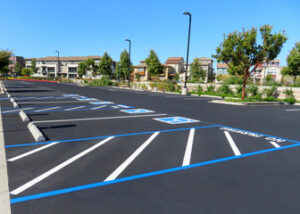Home » Articles posted by Shelby Stevens
Author Archives: Shelby Stevens
Costs of Roof Repair
The cost of labor plays a large role in roof repair. Skilled labor ensures a quality and durable repair. Labor costs also vary depending on the complexity of the repairs and the difficulty of accessing the damaged area.

If your roof is leaking or showing signs of deterioration, it’s time to call in the professionals. However, a little preparation can help homeowners understand what to expect.
The shingles on your roof are a crucial barrier between your home and the elements. They protect against water leaks and help prevent mold and other damage to the interior of your home. Quality shingle repair is essential for maintaining the integrity of your roof and ensuring its longevity. In addition, well-maintained shingles can add to your property’s curb appeal and value, particularly if you plan to sell it in the future.
Shingles can develop a variety of problems that require repairs, including cracking, curling, and missing pieces. Addressing these issues promptly will prevent further damage to your roof and ensure a leak-free, energy-efficient home. For example, cracked shingles can allow heat to escape during the summer and increase your energy bills. Additionally, leaking shingles can lead to wood rot and other costly structural damage to your house.
Another important benefit of timely shingle repair is that it can prevent damage to the underlayment and decking of your roof. Once a shingle is broken or damaged, moisture can seep into the underlayment and decking of your roofing system. This can cause a number of problems, including rotting, fungus, and mold. It is important to regularly inspect your roof for any signs of damage or deterioration, such as moss growth, shingle discoloration, and leaking shingles.
Proper ventilation is also key for a healthy shingle roof. This allows hot air to escape and prevents condensation from building up inside your attic. In addition, proper ventilation will help prevent shingles from fading or becoming misshapen. Inspect your roof for blocked vents and other obstructions, and consider installing fans or a vented attic to maintain proper airflow.
A shingled roof also provides a layer of insulation that helps regulate the temperature of your home and reduces noise from outside. Over time, however, a damaged or missing shingle can cause the interior of your home to become overheated or too cold. A qualified roofer can inspect your shingles and determine whether they need to be replaced or repaired. They can then provide the necessary services to ensure your home is protected from the elements and remains a comfortable place for you and your family.
Flashing
Flashing is a vital roof maintenance task that zeroes in on fortifying areas of the home where the roof meets other structures or features. Without effective flashing, water can seep into these critical joints, leading to mold growth, rot, and structural damage. Timely flashing repair prevents moisture intrusion and protects the longevity and integrity of the roof, saving homeowners money and safeguarding the interior and structure of their homes.
Flashing prevents leaks by directing water away from the joint and down into gutters or off of the roof. Ideally, flashing is installed at any points where the roof meets walls or other structures, including valleys between slopes and protrusions like chimneys. It is often made of a material that is not easily penetrated by water, such as metal, and can also be constructed from more flexible materials, such as plastics or modern composites.
A wide variety of flashing types exist, but the most commonly installed include step flashing (installed at a point where the roof meets a wall) and kickout flashing (installed at the point where the top of the roof meets a sidewall). Continuous flashing is a long, single piece that runs horizontally along the roof. This type of flashing has built-in expansion joints, which allow it to flex with the roof as it expands and contracts throughout the year.
Other flashing types are installed around particular points of interruption, such as plumbing vents or skylights. These types of flashing typically feature a rubber or metal collar that tightly fits around the pipe or skylight, and is then sealed to the roof with caulking. A flashing system is only as effective as the caulking that secures it to the roof, so it’s important that these sealants are maintained and inspected regularly. Branches, leaves, moss, and other debris can degrade the caulking, allowing water to seep in or find its way beneath the shingles. These issues can cause a variety of problems, from minor cosmetic blemishes to severe structural damage.
Underlayment
Your roof underlayment is one of the most important parts of your roofing system. This is because it protects your home from moisture damage, and it also provides a secondary defense against harsh weather conditions.
Typically made of asphalt-saturated felt or modern synthetic materials, it covers your roof deck and serves as the primary barrier against water penetration. It prevents water during rain events from infiltrating your home, thereby protecting against rot, mold growth and other damage.
There are several different types of underlayment, including organic felt underlayment and fiberglass underlayment. Organic and fiberglass underlayments are ideal for standard pitched roofs, since they are both lightweight and waterproof. Asphalt-saturated felt underlayment is another popular choice, as it used to be the industry standard before new research and technology brought synthetic products into the spotlight. It is inexpensive and effective, but it’s not very strong and can tear easily.
Synthetic underlayment is an upgraded version of felt, and it’s now the most common choice for roofing renovations. Its main advantage is its higher resilience and water resistance, making it easier to install. Synthetic underlayment is typically made of polypropylene or polyethylene fibers, and it has a sticky backing like a thick sticker for easy application. It’s more expensive than felt, but it offers better protection against weather conditions and can also qualify you for better shingle warranty coverage.
It’s crucial to replace your underlayment during a roof replacement project because old material can cause gaps between the new roof components and the underlayment, creating leaks and causing structural damage over time. It’s also possible that the older underlayment may contain hidden rot or other damage, which could lead to a host of problems in the future. Additionally, removing the existing underlayment allows you to thoroughly inspect it for any damage or rot and repair these issues before installing your new roof. This will keep your house safe and dry throughout the years to come. In addition to protecting your home from unwanted moisture infiltration, a high-quality underlayment will mitigate noise pollution by absorbing and dampening vibrations. This feature can transform your home into a tranquil oasis, ideal for peaceful reading sessions or undisturbed sleep.
Gutters
Gutters may seem like mundane home exterior structures, but they play a vital role in protecting roof health. They redirect rainwater away from walls, foundations and landscaping, preventing soil erosion and structural damage over time. They also prevent leaks and water damage to siding, fascia, soffits, and interior walls. In addition, well-functioning gutters protect the house’s structure from mold growth.
Gutter issues such as clogs, sagging, and missing sections can all compromise the effectiveness of your roof and lead to costly repairs or replacement. Regular gutter cleaning and inspections can help extend the lifespan of your gutters and minimize the risk of roof damage.
Without gutters, rainwater would pour off the roof edge uncontrollably, causing soil erosion and flooding in basements. Gutters are designed to collect and redirect rainfall through downspouts, thereby reducing soil erosion and flood risk, while preserving the fascia, soffit, and paint of your home’s exterior.
In winter, a properly functioning gutter system will facilitate the flow of melting snow and ice, preventing ice dams from forming on the roof’s surface. Without a functional gutter system, melting snow can pool in gutters and overflow them, leading to water overflow and damaging your roof. Gutters should be cleaned and inspected regularly to ensure that they’re ready for winter weather.
If you’re planning to clean your own gutters, you should be aware of the potential hazards involved in climbing a ladder. It’s recommended to hire a professional who has the proper equipment and training to safely clean your gutters. A professional can also inspect the gutter system for any signs of wear and tear, repairing them before problems arise.
In addition to repairing roof damage, a skilled professional can perform a variety of other tasks such as window repair and replacement, deck staining and painting, and siding installation. Keeping your roof, gutters, and siding well-maintained can protect your home’s value and prolong its life.
Naturopathic Medicine
First, do no harm (primum non nocere): naturopathic doctors are very discerning with prescription drugs and are more likely to follow standard of care guidelines to avoid unnecessary prescribing which can contribute to iatrogenic causes of illness and death.

Naturopathy recognizes there are a multitude of factors that affect health, including context, environmental and lifestyle influences. Naturopathic doctors explore a wider range of these factors than traditional practitioners. Visit https://medicinetothrive.com/ to learn more.
Naturopathic doctors support well-being by utilizing the most natural, least invasive and least toxic therapies. They look beyond symptoms to find the underlying cause of illness, and they trust in your body’s inherent ability to heal itself. They educate patients in the steps to achieve and maintain health, and they view the human being as a whole in all of its physical, psychological and spiritual dimensions.
In addition to educating patients on preventative care, naturopaths teach their patients to spot warning signs that disease may be developing. This is called secondary prevention, which works to identify and treat diseases as they become more entrenched. For example, mammograms and colonoscopies help to identify cancer in its earliest stages when it is still reversible.
While naturopaths are primarily focused on primary and secondary prevention, they also know that tertiary prevention is sometimes necessary. This is particularly true for chronic conditions such as diabetes, arthritis, heart disease and obesity.
Often, these conditions can be prevented with simple changes in lifestyle and nutrition. A naturopath can assist with these changes by offering nutritional advice, lifestyle counseling and dietary supplements. In addition, naturopaths can offer physical medicine treatments such as soft tissue work including therapeutic massage, spinal adjustments, physiotherapy using heat and cold, hydrotherapy, diathermy and exercise therapy.
Mental attitudes and emotional states also play a role in health and disease, and naturopaths are trained in a variety of approaches including short-term situational counselling, couples counseling, and mind-body techniques. In some states, naturopaths are licensed to prescribe medication and can thus complement conventional treatment strategies with pharmaceutical drugs.
Many naturopaths also incorporate spirituality into their practice and can use various methods of counseling such as hypnosis, guided imagery and acupuncture. Additionally, naturopaths frequently collaborate with other healthcare providers to ensure that they are providing you with the best treatment options. This includes working with medical doctors to ensure that naturopathic treatments don’t interact with any medications you are taking. This helps to minimize complications from any treatments you are undergoing. In addition, naturopaths often advise patients to see their primary care physicians prior to starting any new therapy so that they can collect a complete medical history and be aware of any conditions that require immediate attention.
Diagnosis
The naturopathic physician is trained to thoroughly assess and understand each patient. They see symptoms as the expression of an underlying imbalance and seek to uncover these imbalances by removing obstacles to health, supporting the healing process and eliminating disease through the principles of nature’s cure (tolle causam). Naturopathy recognizes that each person has a unique makeup or constitution that influences their physical and emotional responses to stressors. As a result, treatment approaches will be tailored to the individual, with consideration given for how they might respond to various therapies, such as herbal medicine, massage therapy and acupuncture.
NDs believe that there is an inherent healing force in the body and that a healthy environment, nutrition and exercise are important to this healing process. They also encourage each patient to pursue their own spiritual path.
When a patient visits a naturopathic doctor, they can expect to spend between 1 and 2 hours being examined. The doctor will take a detailed history, and may order lab tests.
While naturopathic doctors (NDs) focus on the underlying causes of disease, they are also well-versed in diagnostic methods that have been widely accepted and used in conventional medical practice. NDs utilize research drawn from many disciplines, including naturopathic medicine, conventional medicine, European complementary medicine, clinical nutrition, phytotherapy and homeopathy.
The naturopathic practitioner will also assess the risk factors and hereditary susceptibility to illness, as well as recommend lifestyle changes to help prevent disease. In addition, naturopathic physicians are able to prescribe pharmaceutical medications.
Naturopathic doctors have extensive training in natural treatments, and they know how to identify potential drug/herb interactions. This means that if you are taking any prescription medications, it’s important to tell your doctor about them before seeking naturopathic care.
NDs are trained to use safe, effective, evidence-based therapies, and they have an in-depth understanding of the latest research on human health and human systems. In fact, naturopathic medicine is one of the fastest growing forms of primary care, and it blends centuries-old knowledge with modern scientific advancements. It’s an excellent alternative to the traditional medicine you’re probably used to, and it may help to treat conditions that are not responding to conventional treatments.
Treatment
The goal of naturopathic treatment is to support the body’s natural ability to recover from disease. Naturopaths do this by helping patients adopt a healthy diet, conserve their energy, remove toxins and support the body’s structural integrity. They also use counseling techniques to address emotional problems and stress, which can interfere with healing.
As part of their diagnostic work, naturopathic doctors take a full medical history and do a physical examination. They ask about dietary habits, family history and environmental exposures, and may perform lab tests. The naturopath then uses an in-depth understanding of the human body’s physiological and biochemical processes to find the cause of disease. This enables them to offer appropriate naturopathic treatments and therapies to help their patients achieve health.
Often, a naturopathic doctor will prescribe an herbal medicine or natural supplement to alleviate a patient’s symptoms. These medicines are usually safe and have few side effects. Many of them are based on centuries-old healing traditions. Some have even undergone scientific testing and been proven effective. These natural therapies can also be used alongside conventional medicine.
A naturopathic doctor will also use physical modalities to treat the underlying cause of a patient’s symptoms. These include spinal manipulation, massage therapy, therapeutic exercise and cranial sacral therapy. The naturopathic doctor will use these modalities in a way that minimizes any toxic effects. They are also trained to recognize drug-herb and drug-nutrient interactions. If they do not feel that naturopathic treatments are appropriate for the patient, they will refer them to a medical doctor.
Naturopathy has become increasingly popular, and there is growing research on the effectiveness of some alternative therapies. However, the research on alternative medicine is not as extensive as that for pharmaceutical drugs. This is partly because the conventional medical community has largely embraced a scientific approach that overlooks or ignores non-pharmacological therapies.
People who use naturopathy often do so because they want to boost their health or prevent illness. They might also be looking for alternatives to prescription medications, which have been linked to a host of side effects. Before using naturopathy, patients should tell their medical doctors to make sure that the treatments will not interfere with any existing medication.
Counseling
The health care system needs to shift its focus to keeping people healthy in addition to treating them when they get sick. Licensed naturopathic doctors are uniquely trained to do this. They attend a five-year graduate-level naturopathic medical school and are educated in all of the same basic sciences as an M.D. They also learn a wide variety of holistic and nontoxic therapies to help patients achieve their wellness goals, including acupuncture, massage, nutritional counseling, physical therapy, and applied kinesiology.
These methods are based on centuries-old natural healing treatments and modern scientific knowledge. They are combined with conventional treatment options, such as pharmaceutical drugs and invasive surgeries, to create customized treatment plans that address the root causes of a patient’s condition. A typical visit to an ND may last up to two hours, during which the doctor will ask detailed questions about the patient’s diet, lifestyle habits, stress levels, and other factors that may affect their health. The naturopath may also perform a physical exam and order lab tests.
Many health care providers don’t spend enough time addressing the psychological and social issues that can contribute to illness. NDs are trained to recognize these influences and provide counseling, education, and support to help patients make positive changes in their lives. NDs will often refer patients for more specialized mental health care when appropriate.
A naturopath will encourage spiritual development as part of a patient’s health program, and they may use hypnosis or other forms of psychological counseling. They will also teach patients to be active participants in their own healthcare, helping them to establish healthy sleep patterns, eat well, exercise regularly, and manage stress levels.
Naturopaths are not medical doctors and may not be covered by some health insurance plans. However, naturopathy can be used in conjunction with conventional medicine to treat a wide range of conditions, including digestive problems, allergies, and chronic diseases. The naturopath’s main goal is to heal the body, mind, and soul to promote overall health and wellbeing. When used properly, naturopathy can help patients avoid costly prescription medication and improve their quality of life.
